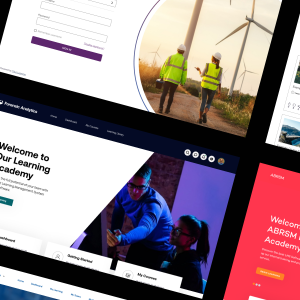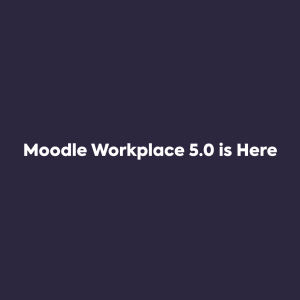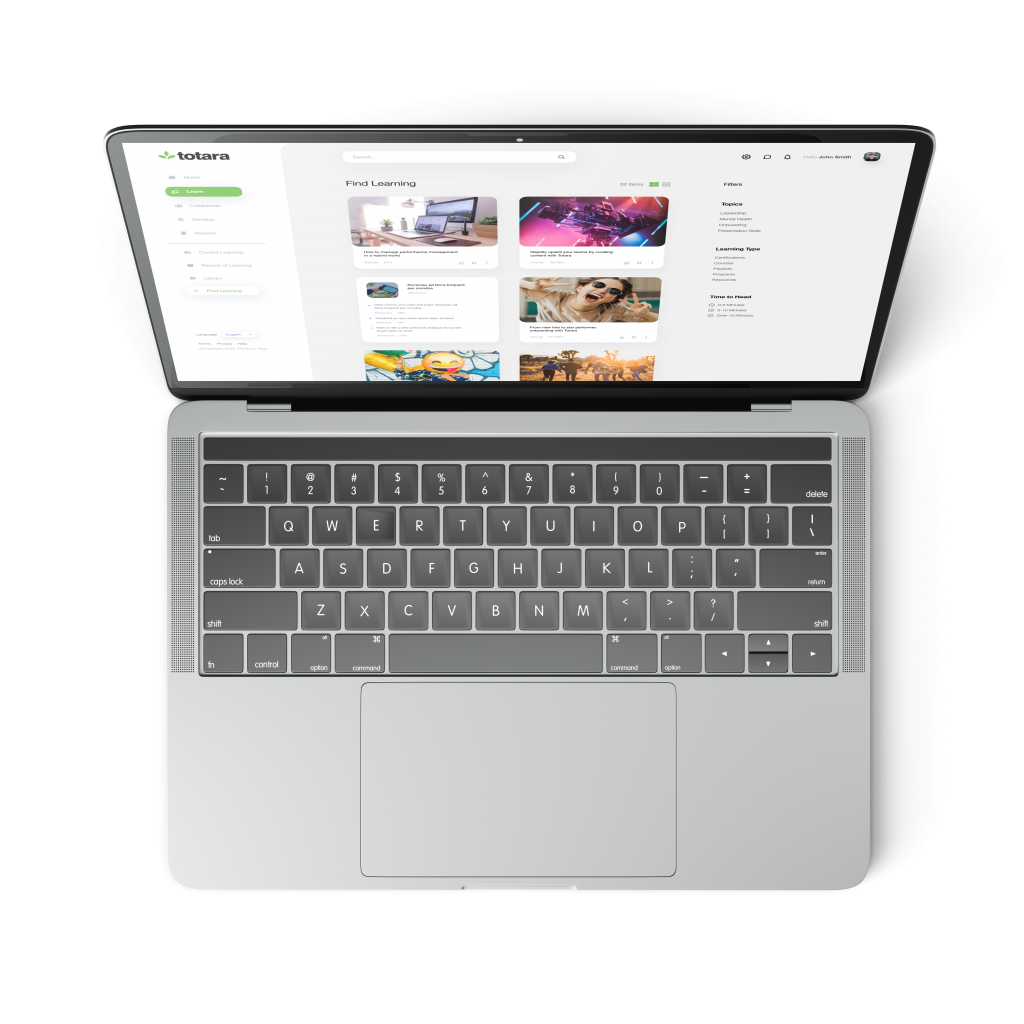As a Premium Certified Moodle Partner, one of the most common questions we hear about Moodle Workplace when talking to organisations looking for a new LMS is – how does it stack up against the competition?
The most frequent comparison which prospective clients ask for our advice on is between Moodle Workplace and Totara Learn 13. That’s not such a surprise, as many of our readers will be aware, Totara is a Moodle-based platform at its core, and there are a number of vendors who offer both Moodle and Totara solutions.
Traditionally though, the divide between the two learning management systems was principally their target user base. Moodle has a long pedigree in educational applications, from schools to universities, whereas Totara was conceived as a “business” version of the Moodle platform, adding a layer of customisation to the open-source LMS.
In 2019 though, Moodle released its own enterprise-level product, Moodle Workplace, specifically designed to meet the needs of large organisations across the public, private and third sectors.
In Moodle Workplace, as opposed to Totara, the functionality needed to meet the needs of workplace users isn’t added on, it’s built into the core of the platform. This means upgrades are seamless, security patches are available immediately, integration with other systems is much simpler and system performance is more reliable and efficient.
Overall, both solutions offer a comprehensive set of features for business users, but there are a few areas in which Moodle Workplace provides additional functionality, which we’ll look at below.
Is Moodle Workplace or Totara better for employee onboarding?
Like the majority of LMS providers, we offer our clients a comprehensive and customisable training program to ensure that all the relevant parties are up to speed before launching a new LMS. Obviously, though, most organisations will have a steady stream of new starters joining the business on an ongoing basis and each of these new recruits will need to be trained in using the company LMS.
One feature in Moodle Workplace which helps facilitate this is the User Tour, which allows for the creation of a “tutorial mode” where users are presented with pop-up speech-bubble style elements that can be used to highlight which links need to be followed or the order in which buttons need to be clicked to perform a specific action.
It’s a feature which is not unique to Moodle Workplace, or indeed Totara or any of the other leading LMS providers – many of us will have seen this type of interface used in popular web-based applications such as G-Suite, Office 365 or on social media sites.
One key advantage of Moodle’s implementation of the feature though is the ability to create duplicate user tours from a preexisting tour within a couple of clicks, which hugely reduces the workload on administrators when creating numerous user tours for similar activities which will differ only slightly in their content and presentation.
How do they compare in terms of personalisation?
Organisations are increasingly recognising that one of the most important factors in maintaining a high level of engagement among learners is the provision of personalised learning. While both Moodle Workplace and Totara can boast a raft of features designed to enable L&D managers to deliver a customised learning experience at an individual level, there are a few areas where Moodle’s workplace learning-focused platform pulls ahead of the competition.
Cohort-based themes allow for the visual appearance of the platform to be customised to specific groups of users, for example, implementing a different theme for sales staff versus warehouse staff, or management versus admin staff. This isn’t only an aesthetic feature however, it also has an impact on the usability of the platform.
One of the best examples we’ve seen of this being put into use was in a company which introduced a custom Moodle theme for all new starters still in their induction phase. This meant that on logging into Moodle Workplace new recruits would see a specially designed interface, with clear links to important information, guides on how to use the platform itself and easy to navigate onboarding courses and activities.
Another feature introduced in a recent version of Moodle Workplace (and not currently available in Totara) is the ability to create “if-this-then-that” style rules which will automatically perform predetermined actions based on whether certain conditions are met. The potential uses for this feature are extensive. For example, dynamic rules might be used to enrol all users who complete a specific course successfully into a follow-up course. Or to award all users who have achieved a particular score on a course with a badge or certificate.
Competencies linked to activities
In the context of online learning, competencies represent the level of understanding a learner demonstrates in a particular subject area or their proficiency in a specific skill. Competencies are deployed in several major LMS platforms in one form or another to facilitate the evaluation of learners’ abilities against role-specific requirements.
In Moodle Workplace, competencies can be linked to activities within a predefined framework, which allows course leaders to track their learners’ progress and attainment against a predefined learning plan. Learning plans can be personalised to an individual learner, or can be commonly applied across whole groups or cohorts.
This empowers the learners themselves to manage their own learning, upload evidence of prior learning or experience against particular competencies and proactively request a review of their progress from a manager or trainer.
Unlike other platforms, including Totara, Moodle Workplace allows for badges to be awarded against competencies, which adds an element of gamification to the learner journey, while also providing an easy-to-demonstrate record of an individual’s progress with respect to their learning plan.
Does Moodle Workplace or Totora offer better analytics functionality?
Access to detailed reporting and analytics, both at a group and individual level is one of the most powerful aspects of a corporate LMS such as Moodle Workplace or Totara, particularly at management level. Both platforms offer a range of predefined reports as well as a report builder which allows users to create their own custom outputs and export or send them to interested parties on an automated schedule.
Where Moodle Workplace excels, in particular, is in taking that function a step further and using pattern and group analysis to identify learners who are struggling with a particular course or assessment and may be at risk of dropping out and becoming disengaged.
Rather than digging down into the existing reports, managers can be automatically alerted via the LMS when an at-risk learner is identified, and have immediate access to the relevant information about that individual, allowing them to intervene in a timely fashion and provide support or assistance as needed.
Which is better for communicating with learners?
A key feature of workplace LMS platforms is the ability to allow both synchronous communication; enabling users to keep in touch in real-time, seek guidance from trainers or peers and access course notifications; as well as asynchronous communication which avoids unnecessary interruptions to workflows while allowing requests or updates to be sent and replied when convenient for both parties.
There are a couple of features within Moodle Workplace’s rich communication function which elevate it above the available options in Totara and other platforms. Firstly, users are able to perform a simple summary report and export of forum messages, allowing the creation and maintenance of an organic knowledge base and recording peer-to-peer learning.
Secondly, the ability to create group conversations for users on the same course, or in the same department, allowing multi-directional chat on the topic at hand. And lastly, the Moodle Workplace messaging system supports the use of emojis – which although it sounds like merely a fun addition, is actually surprisingly useful in a number of situations.
What assessment features does Moodle Workplace have compared to Totara
With the rise in home working prompted by the 2020 global pandemic, organisations have had to adapt how they assess employees consistently and securely without a physical presence. For moderated assessments which would usually be conducted in an exam format, it’s vital that monitoring tools are available to ensure that remote candidates are conforming with the relevant rules around the use of external resources, notes or tools to ensure that the assessment is fair and transparent for all participants.
Moodle Workplace offers a solution in the form of deep integration with a leading assessment security tool – Safe Exam Browser (SEB) – something which is not currently available in Totara 13. SEB allows assessors to secure candidates’ workstations by restricting their access to alternate web browsers, applications or other channels during the course of the examination. The software is widely used throughout educational institutions as well as within workplace settings to ensure the validity of assessment outcomes.
The integration with Moodle gives assessors a range of features to ensure that the assessment environment is suitably controlled and monitored, including:
Restricting assessments or quizzes so that they may only be accessed via SEB, and will not load in an alternate browser.
- Preventing learners from exiting or closing SEB until they have submitted their completed assessment for review.
- Specifying which applications may be used while the assessment is in progress – e.g. blocking Chrome and Firefox, but allowing a calculator app.
- Specifying which websites may be accessed during an assessment by creating a whitelist of permitted online resources.
- Creating SEB templates at the site administrator level, with permissions preconfigured to make it easy for assessors to create compliant assessments without manually configuring each one.
As well as the functionality available via integration with SEB, one other feature in Moodle Workplace which is not yet available via Totara is the ability to allow anonymous grading. This is particularly useful in avoiding perceived conflicts of interest or mitigating concerns about assessor privacy.
Content: Moodle Workplace vs Totara
To make the most of the capabilities of current generation learning platforms such as Moodle Workplace, courses should be designed to incorporate a wide range of media, which may be produced in-house or sourced from specialist content providers.
H5P is an open-source standard which is widely used to create and share rich HTML5 content on webpages or within courses in an LMS. The ability to use H5P to produce professional-quality resources and activities quickly and easily, including interactive videos, immersive presentations, educational games, engaging puzzles and quizzes is vital in ensuring that courses engage learners and allow them to digest information in a variety of styles.
Moodle Workplace has supported H5P from launch setting it apart from some competitors in the LMS space, which means that course creators can easily import third-party content libraries, and combine that content with resources they have designed themselves to customise courses to specific organisational requirements and meet learners’ needs.
While the current version of Totara Learn offers support for H5P content, it doesn’t feature the same depth of integration as available in Moodle Workplace. Via LTI integration, Moodle allows course leaders to create H5P content directly within the platform, and also to access analytics within Moodle related to user behaviour – e.g. what answers were given to specific quiz questions. All content and grades are stored within the Moodle Workplace platform, resulting in a far more streamlined and efficient solution.
Conclusion: Totara or Moodle Workplace?
It’s fair to say that if you’re making a comparison of Moodle Workplace versus Totara, you’ll find that the two platforms have more in common, in terms of functionality, than they have differences. In our experience though, Moodle Workplace has the edge, not only due to the presence of some of the features we’ve mentioned above but also because of its status as an official Moodle product.
Being developed by Moodle HQ and supported by Moodle Premium Partners such as Titus means a smoother and more predictable experience when it comes to new feature development, new version releases and the testing and upgrade process for Moodle Workplace.
If you’re currently considering Moodle Workplace for your own organisation and would like to discuss in more detail the benefits of the platform when compared to other learning management systems on the market, we’d be delighted to hear from you. You can get in touch with one of our team here:







